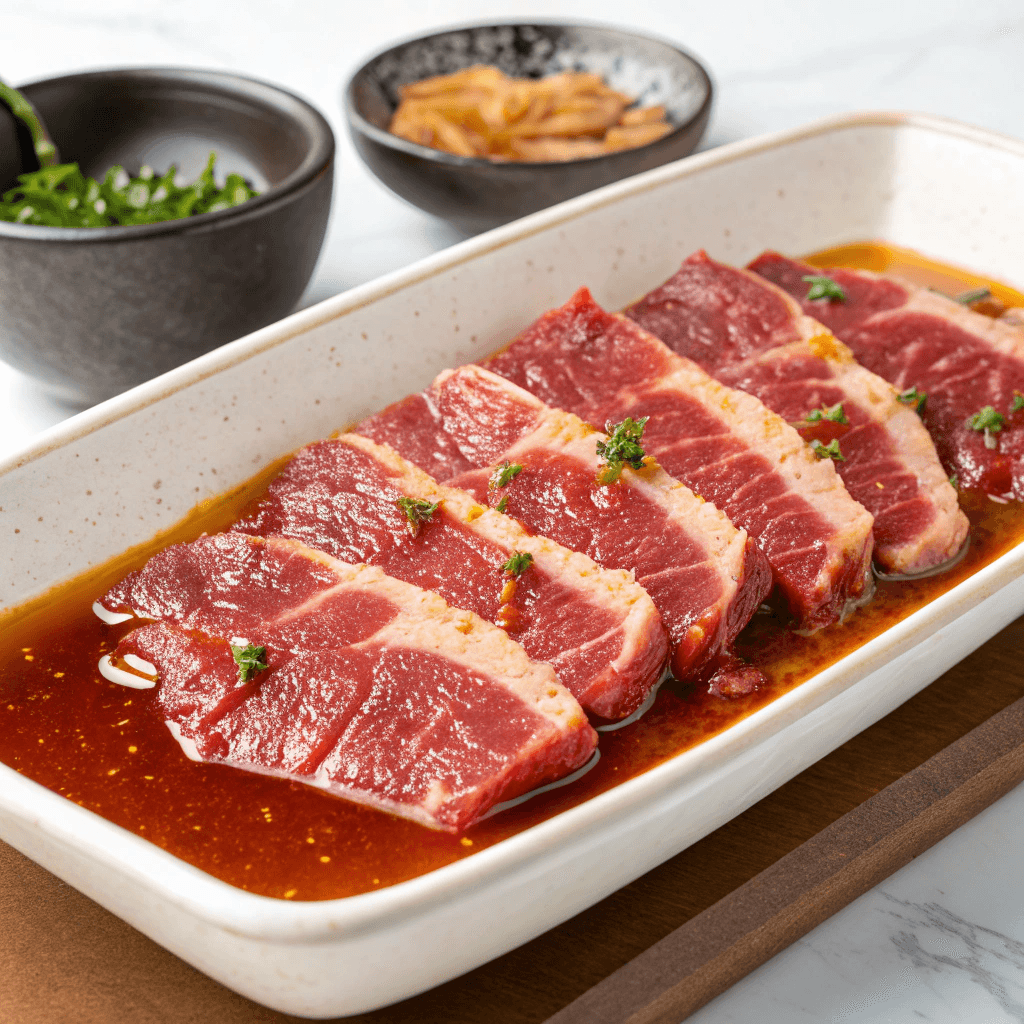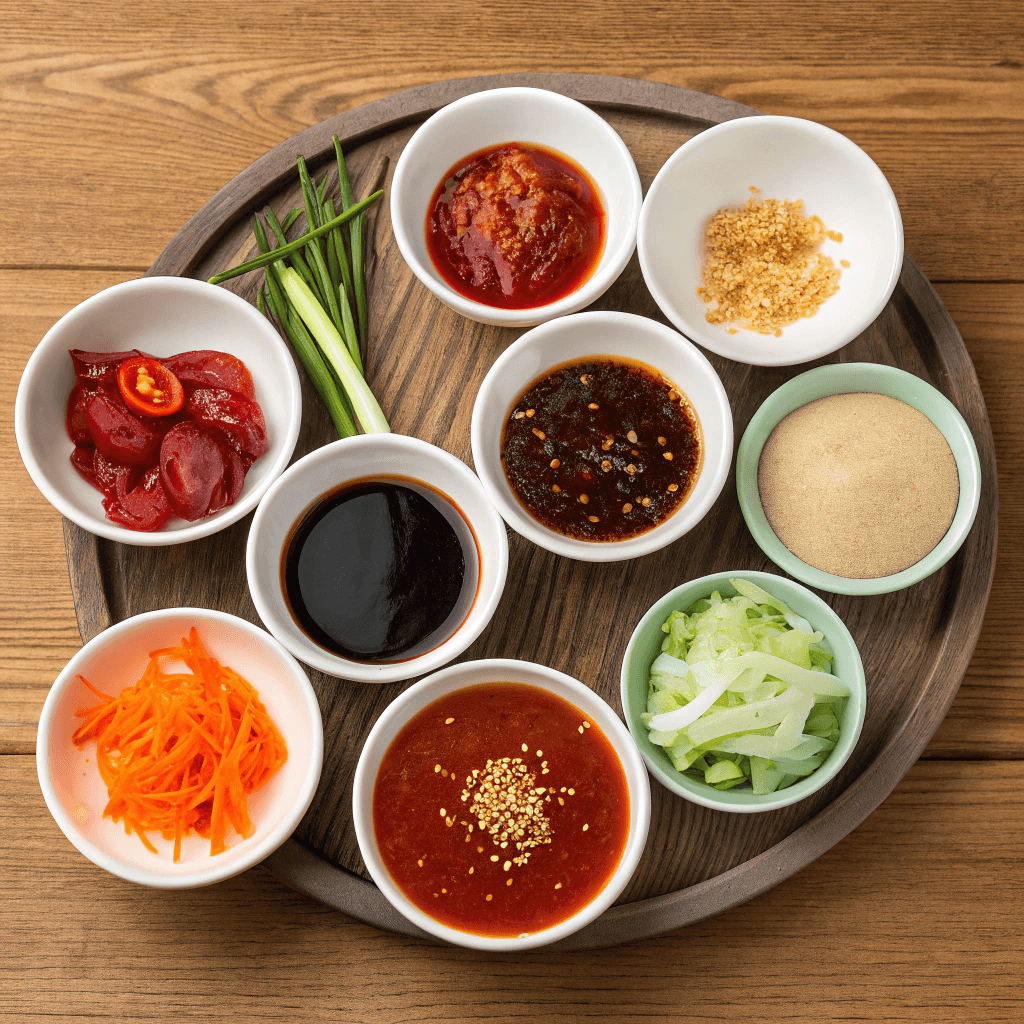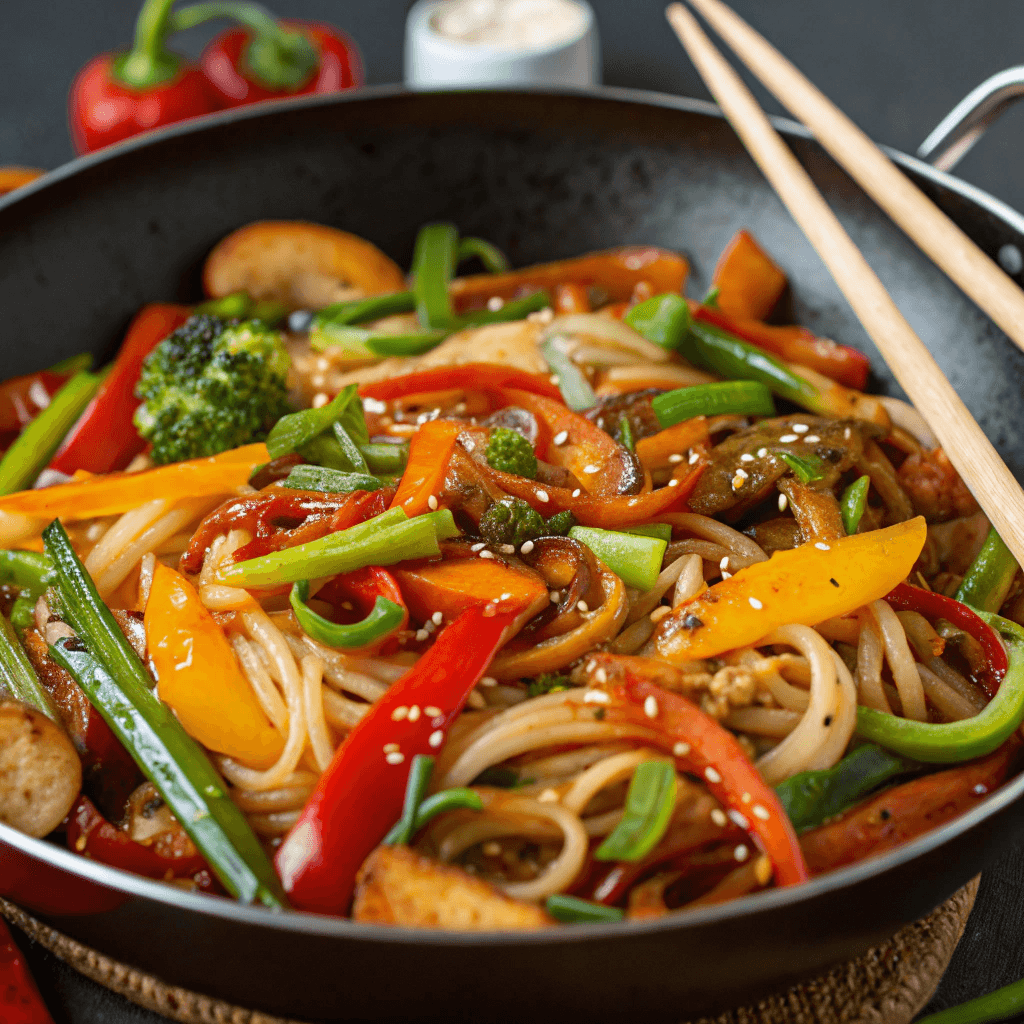1 Delicious Korean BBQ Sauce: A Deep Dive
Korean BBQ Sauce , or “gogi gui,” has surged in popularity across the United States, captivating food lovers with its interactive grilling experience and, more importantly, its uniquely flavorful sauces. Indeed, the sauce is not just an accompaniment; it’s a cornerstone of the Korean BBQ experience. Therefore, understanding its components, variations, and applications allows both novice cooks and seasoned foodies to truly savor the depth of Korean cuisine. This comprehensive guide will take you on a journey from the history of the sauce to mastering its creation at home.
The Story Behind the Sauce: History and Cultural Significance
The roots of Korean barbecue are deeply embedded in Korean history, initially emerging as a method of cooking meat over open flames. Over time, the practice has evolved, including the development of various marinades and sauces designed to enhance the flavor of the grilled meats. Consequently, while the grilling method has remained relatively consistent, the sauces have become a diverse element of this delicious tradition. These sauces were originally rather simple, often consisting of just soy sauce, garlic, and maybe a bit of sugar. However, as palates refined, more complex combinations of sweet, savory, and spicy notes began to emerge.
In the present day, Korean barbecue is more than just a meal; it’s a social event. Families and friends gather around the grill, sharing stories and food, all while enjoying the unique flavors. The sauce acts as a binding element, bringing all of these elements together in a way that represents the heart and soul of Korean dining. Furthermore, the sharing of food and sauces underscores the communal aspect of the culinary tradition.
Regional Nuances in Korean BBQ Sauces
It is important to note that there can be subtle differences in the sauces depending on what part of Korea they are from. While soy sauce, garlic, and ginger are foundational, the levels of sweetness or the addition of specific ingredients like local chilies can vary slightly from region to region. Thus, what one might call “classic” in one part of the country, could be somewhat different in another, underscoring the rich diversity of Korea’s culinary landscape.
Unveiling the Magic: Core Ingredients and Their Roles
The magic of Korean BBQ sauce lies in the balance of its key ingredients. Each element plays a crucial role in building its complex flavor profile. Therefore, knowing what they contribute can enhance your cooking with the sauce.
Soy Sauce: The Umami Base
Soy sauce is the very foundation of most Korean BBQ sauces. Therefore, it provides the fundamental savory and salty notes. Using a Korean soy sauce, sometimes called “ganjang,” is ideal for a more authentic taste because it usually has a richer flavor compared to other types of soy sauce. The saltiness, coupled with the fermented umami, gives the sauce its characteristic base flavor.
Sweeteners: Balancing Act
Sweetness is a vital counterbalance to the salty soy sauce. Typically, sugars like brown or white are used. However, some recipes may also include honey, corn syrup, or maple syrup, all of which add layers of depth as well as contributing to the sauce’s viscosity. Furthermore, these sweeteners caramelize when cooked, imparting a glossy finish to the dish.
Garlic and Ginger: Aromatic Powerhouses
Fresh garlic and ginger are essential for creating an aromatic base to the sauce. Indeed, they provide the warmth and depth that elevate the dish from simple to sublime. While fresh is preferred, using garlic or ginger powder can work if fresh isn’t available. However, they will have a slightly different impact on the overall flavor profile of the sauce.
Sesame Oil: Nutty Fragrance
Roasted sesame oil is crucial to give the sauce a nutty flavor and rich aroma. Therefore, always opt for a good quality roasted sesame oil to get the best flavor as opposed to a plain sesame oil. The fragrance of the sesame oil provides an appealing complexity that elevates the flavor of Korean barbecue.
Gochujang and Gochugaru: Spice and Depth
Gochujang, which is a fermented chili paste, and gochugaru, which are chili flakes, contribute the complex spiciness and umami found in many Korean dishes. The fermented quality of gochujang adds a unique layer of depth that goes beyond the heat. The chili flakes add a nice level of heat that can be adjusted based on personal preference.
Mirin: Sweetness and Tenderization
Mirin, or rice wine, adds a touch of sweetness and acidity to the sauce, which helps to balance the overall flavor profile. In addition, it contains enzymes that act as tenderizers when used in marinades. Therefore, Mirin is a valuable addition, especially when marinating meats that are tougher or need to be cooked quickly.
Other Ingredients: Customizing the Flavor
While the above ingredients form the backbone, other components can add subtle variations. For example, the use of fruit purees, like pear, apple, or kiwi, not only adds sweetness but also aids in tenderizing the meat. Other common ingredients are black pepper, which adds a subtle bite, as well as scallions and onions, which add a layer of savory flavor. Rice vinegar or lemon juice adds a needed acidity to the sauce. Therefore, this is where the home cook can create their own signature sauce.
Exploring the Spectrum: Types and Variations of Korean BBQ Sauce
Korean BBQ sauce isn’t a monolithic entity; it comes in different styles, each designed to complement specific meats and flavors. Therefore, learning about these variations can give you a more complete understanding of Korean cooking.
Bulgogi Sauce: The Classic Marinade
Bulgogi sauce is perhaps the most well-known, characterized by its sweet, savory, and relatively mild flavor. Indeed, it is primarily a soy-based marinade that often includes fruit puree, such as pear, along with the usual suspects like garlic, ginger, and sesame oil. It is commonly used with thinly sliced beef, but can also be used with other meats.

Galbi Sauce: Rich and Robust
Galbi sauce is another soy-based variety, however it is a much richer and more robust sauce compared to bulgogi sauce. It usually includes a darker soy sauce, more sugar, and sometimes even additional sweet ingredients, such as brown sugar or molasses. Therefore, it often has a richer and darker appearance. It pairs well with beef short ribs, where the richer flavor enhances the overall experience.
Spicy Gochujang-Based Sauce: A Fiery Kick
For those who prefer a spicy kick, gochujang-based sauce is an excellent option. This sauce incorporates a higher quantity of gochujang, resulting in a bold, fiery, and umami-rich flavor. This sauce is especially popular with chicken, pork, and even seafood. It also has a unique deep red color from the gochujang. Therefore, this is great for lovers of spicy food.
Other Variations: Regional Flavors
Besides the main three, there are other variations that sometimes appear. Some might use toasted sesame seeds, while others might incorporate unique regional ingredients. In conclusion, exploring these is part of the joy of cooking with Korean BBQ sauce.

Homemade vs Store-Bought: The Choice is Yours
While store-bought sauces offer convenience, they often lack the depth and customizability of a homemade sauce. However, creating your own sauce allows you to control the ingredients and tailor the flavor to your specific tastes. Indeed, homemade sauces tend to be far more personalized and often taste better.
Crafting Your Own: How to Make Korean BBQ Sauce at Home
Making Korean BBQ sauce at home is not as hard as it sounds. Here is an easy, basic recipe for a bulgogi-style sauce:
Step-by-Step Recipe for Bulgogi Style Sauce
Ingredients:
- ½ cup Korean soy sauce (ganjang)
- ¼ cup brown sugar
- 2 tablespoons sesame oil (roasted)
- 3 cloves garlic, minced
- 1 tablespoon fresh ginger, minced
- 1 tablespoon honey
- 1 tablespoon mirin
- 2 tablespoons of grated pear or apple
- 1/2 teaspoon black pepper

Instructions:
- Combine Ingredients: In a medium bowl, add the soy sauce, brown sugar, sesame oil, minced garlic, minced ginger, honey, mirin, and grated pear (or apple).
- Whisk Thoroughly: Use a whisk to combine all the ingredients until the sugar dissolves, and everything is well incorporated.
- Add Black Pepper: Finally, add black pepper.
- Taste and Adjust: Taste the sauce and adjust sweetness or saltiness by adding more sugar, honey, or soy sauce if needed.
- Ready to Use: The sauce is ready to use as a marinade, glaze, or dipping sauce.
Modifying the Recipe: Making It Your Own
- To make it Spicy: Add 1-2 tablespoons of gochujang or 1 teaspoon of gochugaru to the recipe.
- To make it sweeter: Add more honey or sugar
- Regional variations: Try adding rice vinegar or other common ingredients.
Storing the Homemade Sauce
Store your homemade sauce in an airtight container in the refrigerator for up to one week. You can also freeze the sauce for longer storage.
Nutritional Information
Nutrition (per 100g):
| Nutrient | Amount (Approximate) |
| Calories | 160-180 kcal |
| Carbohydrates | 30-35 g |
| Protein | 3-4 g |
| Fat | 5-7 g |
| Sodium | 2000-2500 mg |
| Sugars | 20-25g |
Note: This is an approximate nutritional value. It will vary depending on the ingredients that you use.
Beyond the Grill: Versatile Uses of Korean BBQ Sauce
While primarily known for marinading meats, Korean BBQ sauce is surprisingly versatile. It’s not just for grilling.

Marinating Magic: Tenderizing and Flavoring
When used as a marinade, it not only adds flavor but also tenderizes the meat. Optimal marinating times depend on the meat type; beef and chicken benefit from at least 30 minutes, while thicker cuts might require a few hours. This is because the enzymes in ingredients like fruit purees will help to break down tough fibers of the meats.
Glazing During Cooking: Adding Depth
Brushing the sauce over the meat during cooking creates a beautiful glaze. Applying the glaze towards the end of the cooking process helps prevent burning and allows the sugars to caramelize, which in turn provides an appealing finish and delicious flavor.
Dipping Sauce: Perfect for Cooked Meats
The sauce also works wonderfully as a dipping sauce, allowing you to enjoy the bold flavors with each bite of cooked meat. However, you may choose to use the sauce as is, or add a bit more sugar for extra sweetness.
Beyond Traditional Korean BBQ: Stir-Fries and More
Furthermore, Korean BBQ sauce is not limited to meats; it can also be added to stir-fries, noodle dishes, or as a marinade for tofu or seafood. The possibilities are truly endless. Even a simple bowl of rice can be enhanced with a bit of Korean BBQ sauce.
Pro Tips for the Best Flavor
To truly elevate your Korean BBQ sauce, keep a few tricks in mind. It always makes a difference to invest in the best ingredients!
The Importance of High-Quality Ingredients
Using good quality soy sauce, roasted sesame oil, and gochujang will make a noticeable difference in the final flavor. Therefore, it’s worth spending a bit more to obtain the highest quality available.
Balancing Sweetness and Spice
Adjust the sweetness or spice level according to your preference. Taste the sauce as you make it and add ingredients accordingly to achieve the desired balance. This is also the time where you get to personalize the recipe.
Taste and Adjust as You Go
Don’t be afraid to taste and adjust as you make the sauce. It is best to start with less and add more of each ingredient to achieve the best results.
Blending for a Smooth Texture
Using a food processor or blender can help to create a smooth sauce, especially when pureeing fruit, and helps incorporate the ingredients. This provides a uniform consistency that makes for a more elegant presentation.
Where to Find Your Ingredients
For the best selection of Korean BBQ sauce ingredients, such as gochujang and Korean soy sauce, Asian grocery stores are the best choice. However, many of these ingredients, including premade sauces, can be found online or in some major grocery stores. Therefore, it should be easy for you to obtain all the components necessary to start making Korean BBQ sauce.
FAQ
Here are some frequently asked questions about Korean BBQ sauce:
What is different about Korean barbecue sauce?
Korean BBQ sauce is unique due to its complex balance of sweet, savory, and spicy notes. The combination of soy sauce, garlic, ginger, sesame oil, sweeteners, and spices (like gochujang or gochugaru) is what creates its characteristic flavor. Additionally, the inclusion of fruit puree and other tenderizing ingredients is what sets it apart.
What is Korean BBQ taste like?
Korean BBQ has a complex flavor profile that ranges from savory to sweet and sometimes spicy, often incorporating umami elements. The sauce adds a depth of flavor that is far more complex than just a simple marinade. The balance of salty, sweet, and aromatic notes is what makes it so unique and so appealing.
Is Korean sauce spicy?
While some Korean BBQ sauces are spicy, they aren’t all created with the same level of heat. Some of the sauces, like the Bulgogi sauce, are very mild and sweet, while others can be very spicy, depending on the amount of chili paste or flakes added. Therefore, you have to be aware of the spice level of each sauce.
What is KFC Korean BBQ sauce?
KFC Korean BBQ sauce is an Americanized version of the traditional sauce, used as a glaze or dipping sauce for their fried chicken. It’s usually sweeter and less complex than authentic Korean BBQ sauces, and is widely available as part of their menu in the United States.
To further explore the fascinating world of Korean BBQ and its sauces, consider visiting these external resources. For a deeper understanding of Korean cuisine and its traditions, the Korean Tourism Organization provides a wealth of information. If you’re curious about different types of soy sauce and how they’re used, Serious Eats offers a comprehensive guide. For more insights into gochujang and other Korean ingredients, explore Maangchi’s website. Finally, if you want to see how Korean BBQ sauce can be used beyond traditional grilling, check out The Woks of Life for a wide array of stir-fry recipes. These resources can enrich your knowledge and understanding of this cuisine.
Conclusion
Korean BBQ sauce is far more than a simple marinade or condiment; it is a vital component of Korean cuisine that enhances the flavor of meats and many other foods. From its historical roots to the diverse variations and modern uses, the sauce is truly a culinary experience. Therefore, whether you buy it ready made or craft your own homemade version, understanding the core ingredients and variations will allow you to embrace this culinary treasure and experience its full potential.







